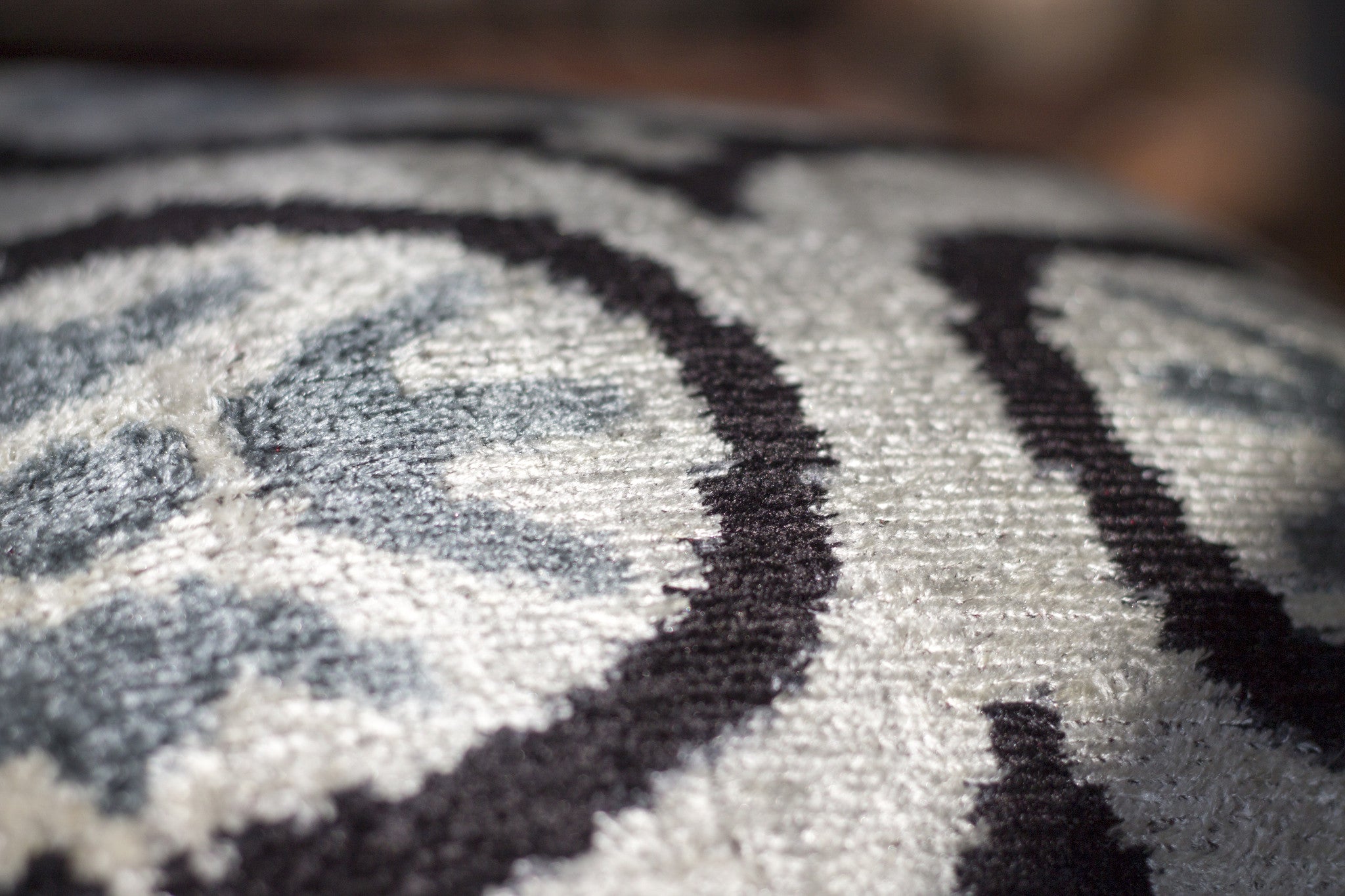How is Ikat Fabric Made?

Unlike other so-called “resist-dyed” fabric techniques -- such as batik and tie-dye -- in which the color is applied to the cloth, ikat fabric features color applied to the threads themselves. Any textile fiber may be used for ikat, but silk and cotton are most commonly used.
Although the specific techniques may vary from culture to culture, the basic process of making ikat fabric follows a similar process. Here are the steps:
- The weaver draws the desired patterns on the warp and weft yarns by hand. “Warp” and “weft” are the terms for the two sets of thread woven together to create fabric. “Weft” refers to threads that run horizontally on the loom, and “warp” threads run vertically on the loom.
- Next, the weaver bundles and ties the threads to match the pattern and then dyes them in the desired colors. The colors seep into the threads in the appropriate places to create the pattern. For elaborate multi-colored designs, the weaver may repeat this process many times.
- Now, the weaver unties the threads and carefully strings them on the loom for weaving into cloth. Although the actual weaving may seem to be the simplest part of the ikat process, it involves a high level of skill and artistry. As the threads are woven tightly together, the weaver creates a distinct pattern with bold colors and detailed designs.
Three main techniques
As perhaps the oldest weaving style in the world, ikat can be differentiated by three main weaving techniques -- warp ikat, weft ikat and double ikat.
Warp Ikat
In warp ikat, only the warp (vertical) yarns are dyed using the ikat technique. By contrast, the weft yarns are dyed a solid color.
Weft Ikat
In weft ikat, only the weft (horizontal) yarn is dyed with the ikat technique. The warp yarns are dyed a solid color. The weft process is more difficult than the warp process, since the weaver has to center and readjust the yarn continually in order to make sure the desired pattern is forming correctly. Any unplanned shifting will alter the design.
Double Ikat
With double ikat, both the warp and weft threads are resist-dyed prior to the weaving process. As you might expect, this technique requires the most time and dexterity.
The weaver wraps and dyes the warp and weft yarns to coincide in the desired pattern. Some complicated patterns require a repeated number of precise unwrapping and rewrapping between dyebaths.
Once the threads have been suitably dyed and dried, the weaver places them on the loom to form the correct pattern. The desired design takes shape as weaver turns the threads into cloth.
No matter which technique is used, ikat is a painstaking and time-consuming process that requires precision – and patience. Ikat is truly an art form, and learning to perform the process correctly can take years of study and practice.
Experienced weavers take pride in the uniqueness of their particular styles and designs. Design colors, patterns and elements vary greatly from culture to culture and can include animals, plants, geometric shapes and even depictions of dream sequences.
A small amount of blurriness usually occurs as even the most skilled weaver aligns the threads. In fact, a blurry or feathery look is a characteristic of ikat fabric design.
The finer the thread and the greater the skill of the weaver, the less any blurriness is visible. However, since a blurry look is so associated with ikat, many textile collectors prize this characteristic and even prefer it.
In today’s global society, ikat is enjoying a new resurgence in popularity. In addition to its place in traditional garments and textiles, ikat fabric is showing up in contemporary interior designs in furniture upholstery, bed and table linens and wall hangings.
In addition to admiring ikat’s distinct style and beauty, modern homeowners across the world appreciate the heritage that comes with this timeless art.